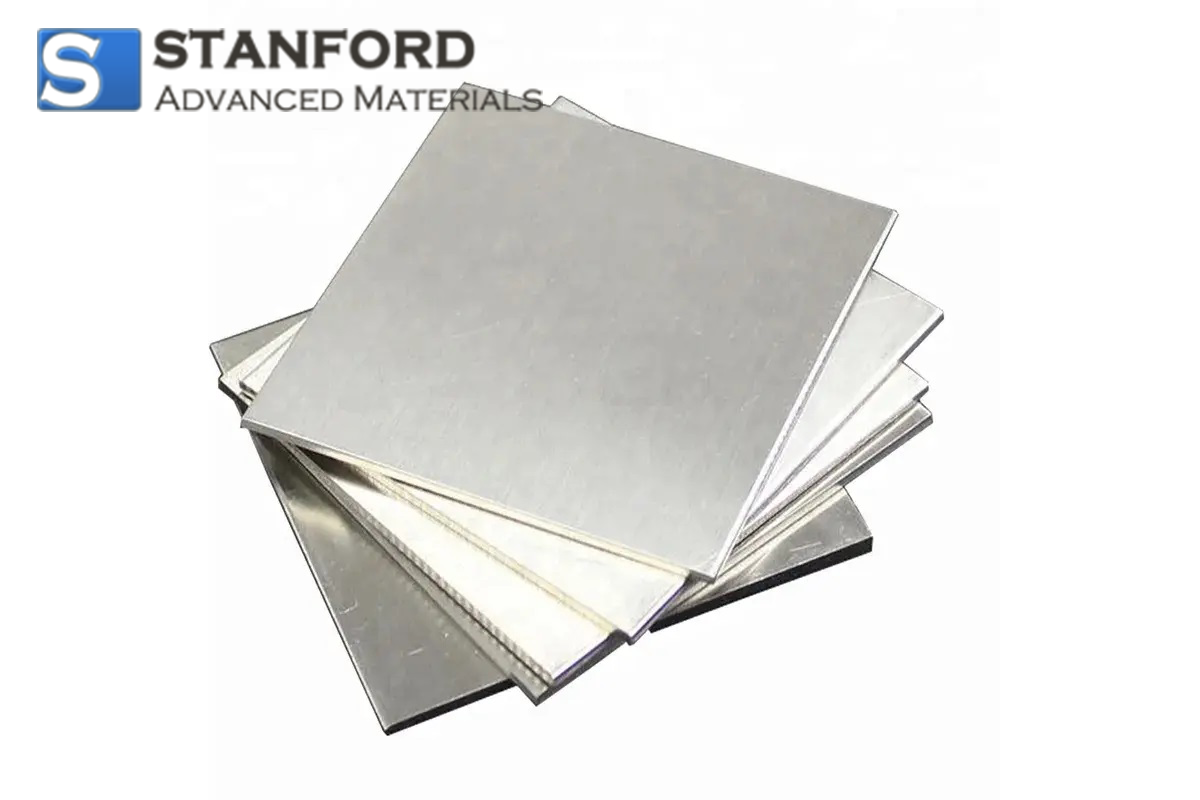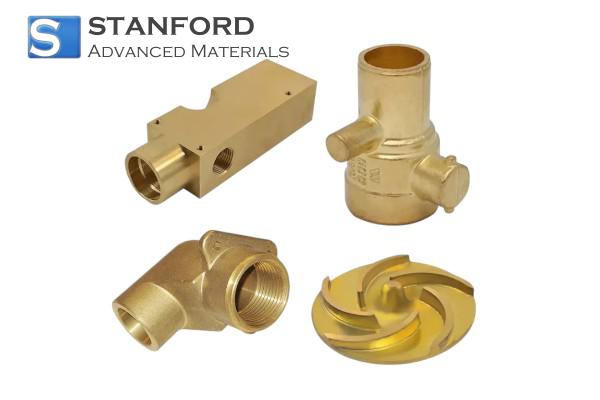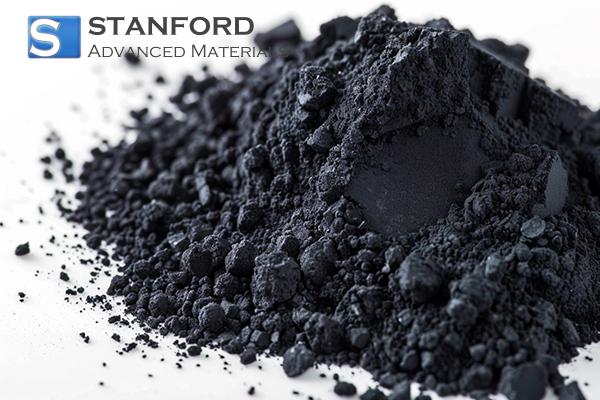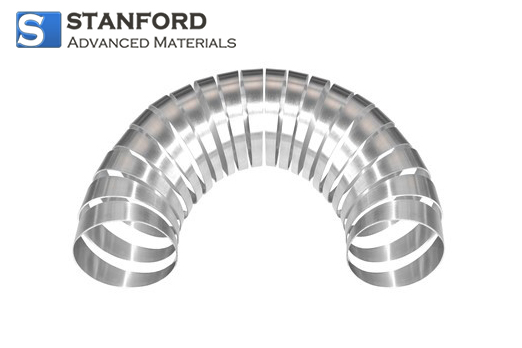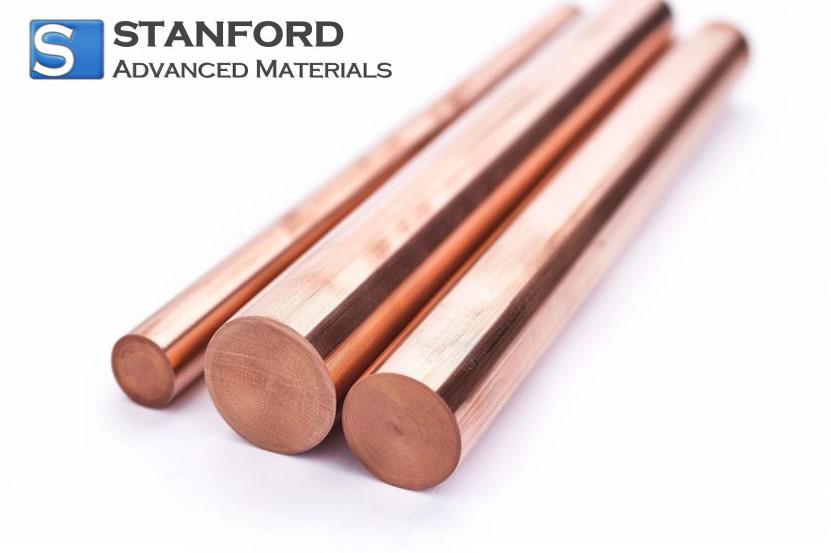C51900 Phosphor Bronze Rod Description
C51900 Phosphor Bronze Rod is a specific type of phosphor bronze alloy that contains copper, tin, and a small amount of phosphorus. It is known for its high strength, excellent corrosion resistance, and good electrical conductivity. C51900 has good mechanical properties, providing high strength and hardness, making it suitable for applications that require durability and resistance to wear.
C51900 Phosphor Bronze Rod Specifications
Typical Chemical Composition (%)
|
UNS No.
|
Sn
|
P
|
Zn
|
Fe
|
Pb
|
Zn
|
|
C51900
|
5.5-7.0
|
0.03-0.35
|
0.3
|
0.1
|
0.05
|
Bal.
|
Product Properties
|
Shape
|
Rod
|
|
Standard
|
ASTM B139
|
|
Melting Point (℃)
|
930
|
|
Density (g/cm3)
|
8.84
|
|
Coefficient of Thermal Expansion
|
18.0 x 10-6 / °C (20-300°C)
|
|
Thermal Conductivity
|
65.8 W/m. °K @ 20°C
|
|
Specific Heat
|
377.1 J/kg. °K @ 20°C
|
|
Electrical Conductivity
|
14% IACS @ 20°C
|
|
Electrical Resistivity
|
12.2 microhm.cm @ 20°C
|
|
Modulus of Elasticity
|
110.3 GPa
|
C51900 Phosphor Bronze Rod Applications
- Electrical Components: Used in connectors, terminals, and contact springs due to its good conductivity and resistance to corrosion.
- Mechanical Parts: Suitable for bearings, bushings, gears, and other components where strength and wear resistance are critical.
- Marine Applications: Utilized in marine hardware due to its resistance to corrosion in seawater.
- Springs and Fasteners: Often employed in the manufacturing of springs and fasteners where a combination of strength, formability, and corrosion resistance is required.
C51900 Phosphor Bronze Rod Packaging
Our C51900 Phosphor Bronze Rod is carefully handled during storage and transportation to preserve the quality of our product in its original condition.
FAQs
Q1: What is C51900 Phosphor Bronze Rod made of?
C51900 Phosphor Bronze Rod is primarily composed of copper (approximately 94.8%), with tin (around 5%) and a small amount of phosphorus (about 0.2%). This specific composition provides a good balance of strength, durability, and corrosion resistance.
Q2: What are the key properties of C51900 Phosphor Bronze Rod?
C51900 Phosphor Bronze Rod is known for its high strength, excellent corrosion resistance, good electrical conductivity, and good formability. It is also resistant to wear and has good fatigue resistance, making it suitable for a wide range of mechanical and electrical applications.
Q3: What are the common applications of C51900 Phosphor Bronze Rod?
This alloy is commonly used in the manufacture of electrical components (like connectors, terminals, and springs), mechanical parts (such as bearings, bushings, and gears), and marine hardware due to its excellent mechanical properties and corrosion resistance.
Specification
Typical Chemical Composition (%)
|
UNS No.
|
Sn
|
P
|
Zn
|
Fe
|
Pb
|
Zn
|
|
C51900
|
5.5-7.0
|
0.03-0.35
|
0.3
|
0.1
|
0.05
|
Bal.
|
Product Properties
|
Shape
|
Rod
|
|
Standard
|
ASTM B139
|
|
Melting Point (℃)
|
930
|
|
Density (g/cm3)
|
8.84
|
|
Coefficient of Thermal Expansion
|
18.0 x 10-6 / °C (20-300°C)
|
|
Thermal Conductivity
|
65.8 W/m. °K @ 20°C
|
|
Specific Heat
|
377.1 J/kg. °K @ 20°C
|
|
Electrical Conductivity
|
14% IACS @ 20°C
|
|
Electrical Resistivity
|
12.2 microhm.cm @ 20°C
|
|
Modulus of Elasticity
|
110.3 GPa
|
